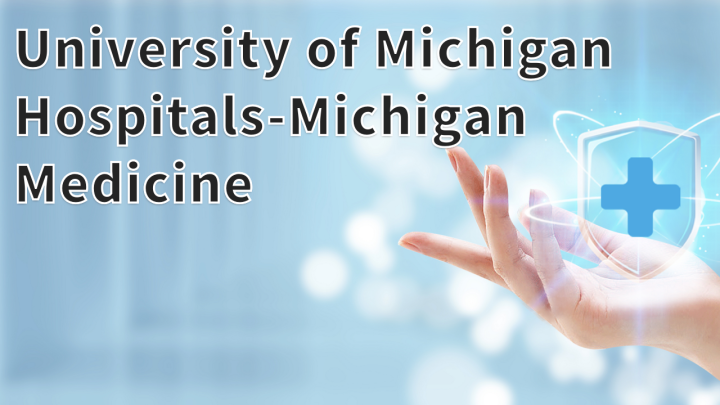The University of Michigan Hospital - Medical College of Michigan in Ann Arbor, Michigan, was ranked fifth on the Best Hospitals Honor Roll. It is ranked nationally in 14 adult and 10 pediatric specialties and rated high performance in one adult specialty and nine procedures and conditions. It is a general medical and surgical facility. It scores highly in patient safety, demonstrating a commitment to reducing accidents and medical errors. It is a teaching hospital.

The 2019 usnews ranking of general hospitals in the United States is #11 in the nation.
Formerly known as the University of Michigan Health System (UMHS), the University of Michigan Hospital is a wholly owned academic medical centre of the University of Michigan, Ann Arbor. It includes the U-M Medical School with its faculty group practice and many research laboratories; the U-M Hospitals and Health Centers, including University Hospital, C.S. Mott Children's Hospital, and von Voigtlander Women's Hospital, as well as approximately 40 health centres and home care services. ICES of Southeastern Michigan; the clinical programs of the Michigan College of Nursing; and the activities of Michigan Health, through which Michigan Health collaborates with other medical centres and hospitals to provide specialized care throughout Michigan.
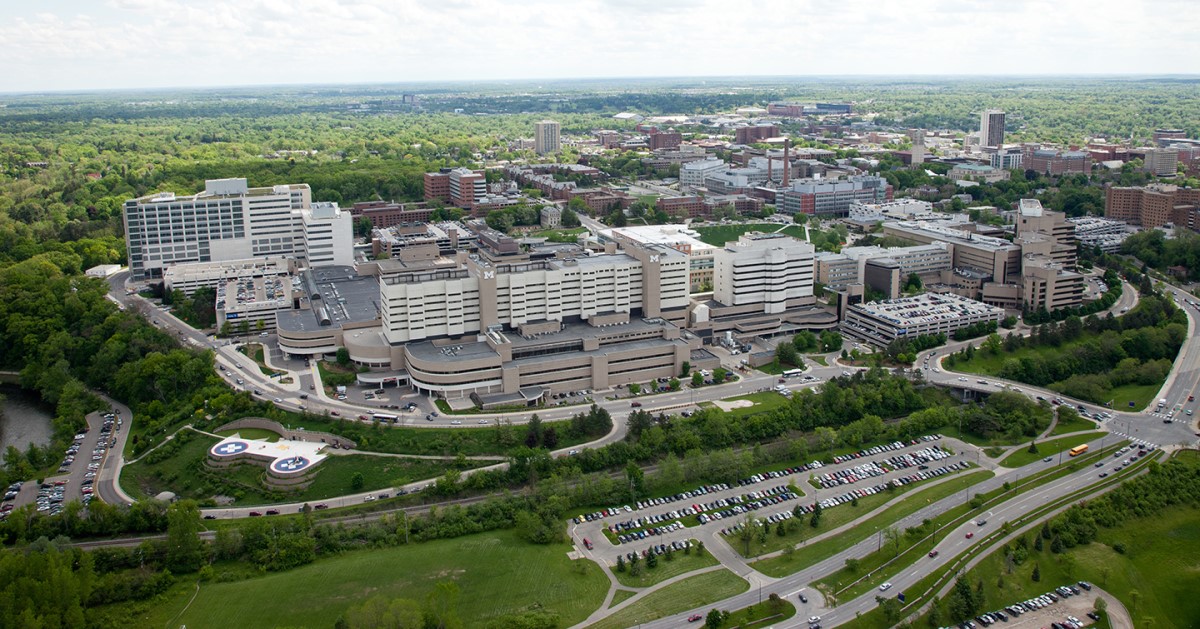
Introduction to University of Michigan Hospital Affiliations
Hospital, Outpatient and Home Care
Michigan Medicine offers a wide range of care with specialized centres for Alzheimer's disease, cancer, cardiovascular care, depression, diabetes, epilepsy, geriatrics, organ transplantation, paediatrics, trauma/burns, vision and women's health research and care. It has a 1,000-bed hospital. As a tertiary care centre, the Medical College of Michigan has 179 intensive care unit (ICU) beds, one of the largest numbers of ICU beds in the United States.
It is also a high-capacity surgical centre with 66 operating theatres. The construction of the $523 million Children's and Women's Hospital and the expansion of the $132 million Eye Centre added 18 operating theatres to the health system, for a total of 82 operating theatres. Outpatient care is provided at Ann Arbor's main medical campus and many satellite locations.
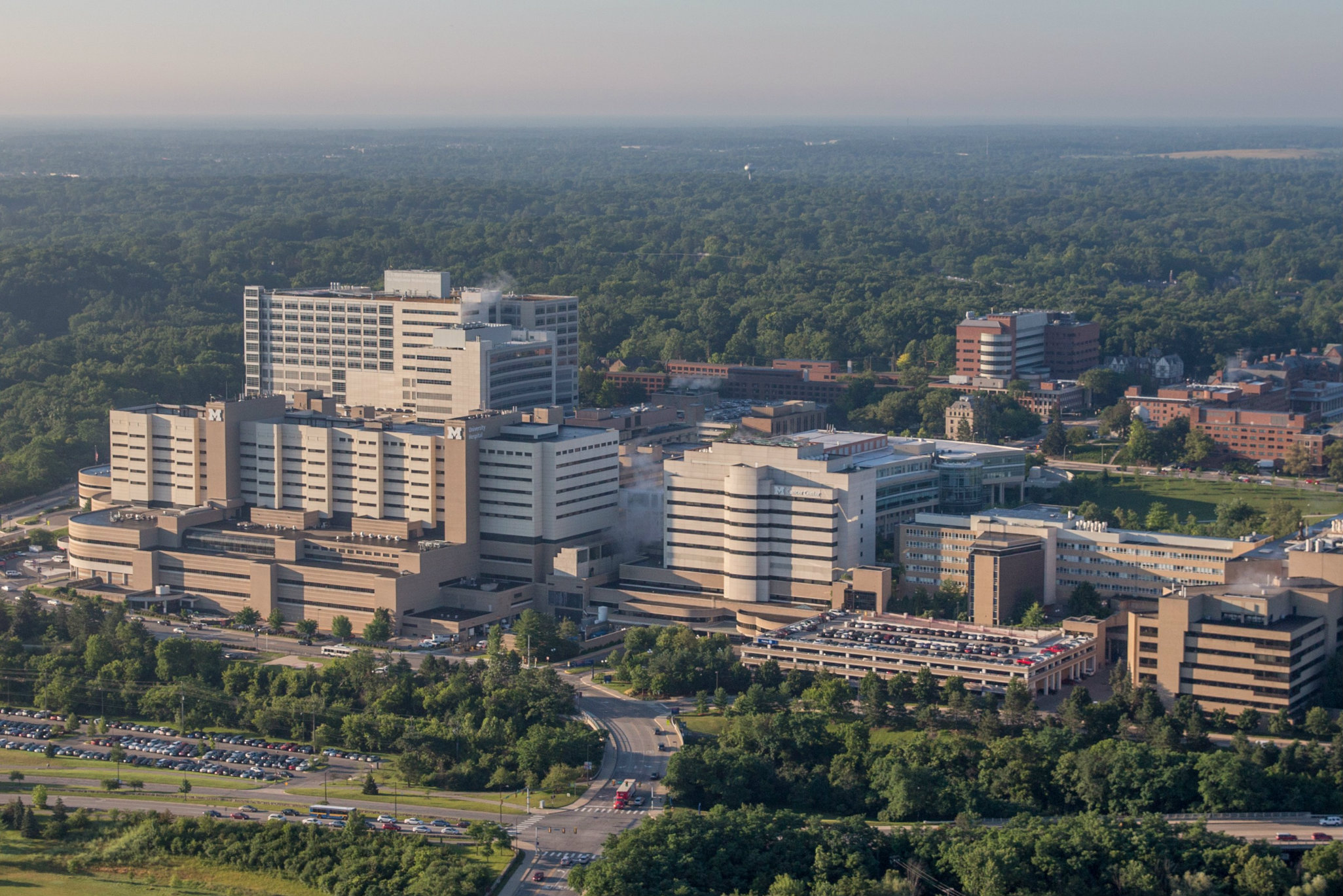
More than 2.4 million outpatient and emergency room visits, 48,000 hospitalizations, 54,000 surgeries and 4,400 deliveries occur each year at facilities operated by the Medical College of Michigan, including University Hospital, C.S. Mott Children's Hospital, Women's Hospital and the A. Alfred Taubman Health Care Centre. It is located at major medical campuses and outpatient medical centres in several communities in southeast Michigan.
The Medical College of Michigan has nearly 26,000 employees, including approximately 2,700 faculty members, more than 5,000 nurses, nearly 1,200 residents and clinical fellows, and other clinical, research, educational and administrative staff. In total, the Michigan Medical School accounts for more than half of the total faculty and staff across all University of Michigan campuses.
Michigan Visiting Nurses, a wholly owned subsidiary of Michigan Health, provides a wide range of home care services in 13 counties in southeast Michigan. These include home care, special therapy, treatment and palliative care. It also provides public and employer-based immunization services.
From 1986 to 2006, the health system included M-Care, a managed care organization that provided health plans for university faculty, staff, retirees, dependents and corporate employees throughout Michigan. in late 2006, due to rapidly changing health plan climate conditions and the health system's need to focus on its core mission of patient care, research and education, the company sold M Care was sold to Blue Cross Blue Shield of Michigan and its Blue Care Network subsidiary.
Survival Flight Rescue
In 1983, UMHS established Survival Flight, the state's first type of flight rescue centre. The service operated three American Eurocopter EC155 B1 helicopters and a Cessna Citation Encore fixed-wing twin-engine jet aircraft. The service's first decade was the American Eurocopter AS355 twin-star vehicle, which was replaced in 1993 by the Bell 230 vehicle, which remained in service for five years. It remained in service until 1998 when it was replaced by the Bell 430 craft. From 2012 to the present, the service has used Eurocopter.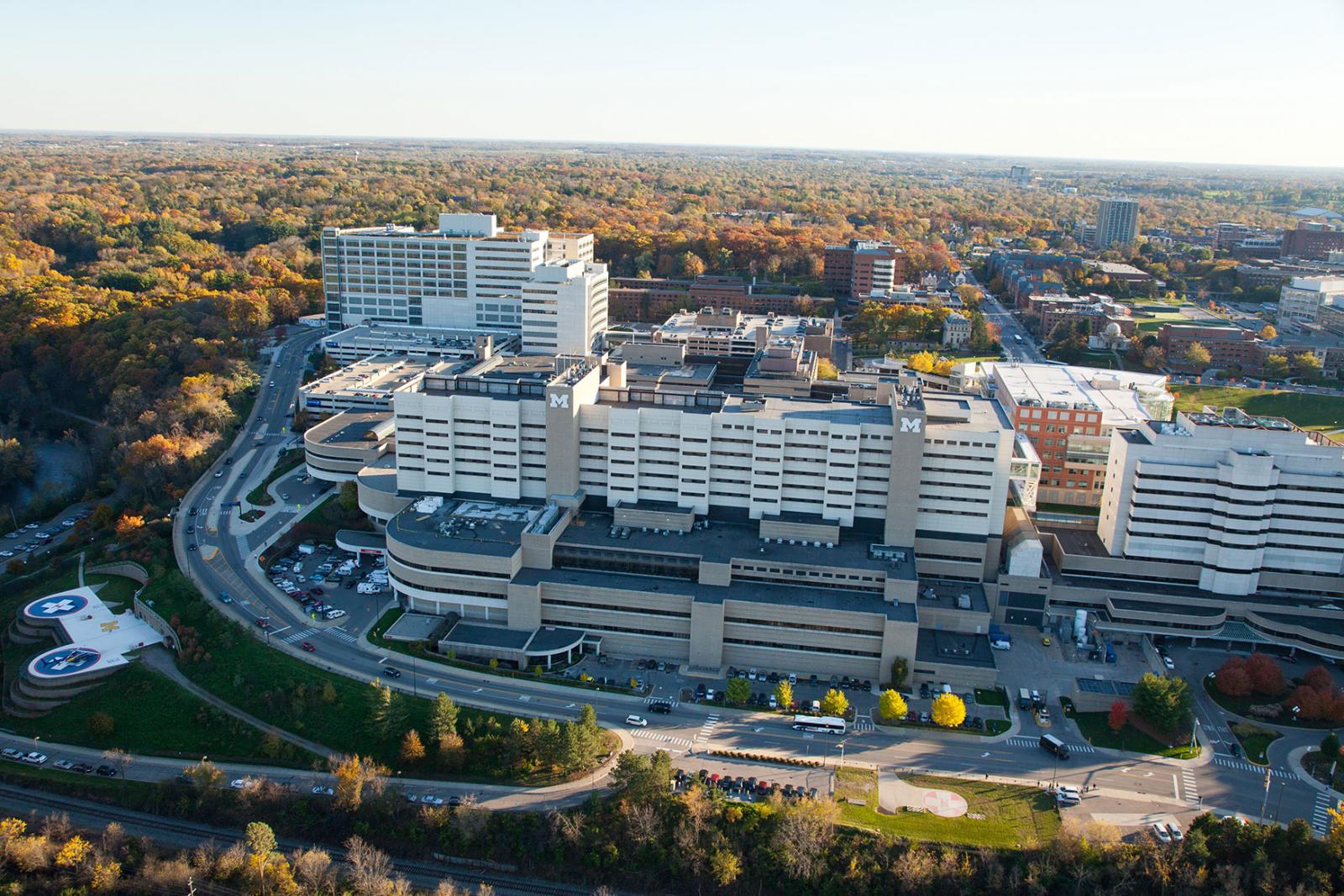
These four aircraft make between 1,000 and 1,500 flights a year, 400 0 2 miles (640 0 2 km) from the U-M campus. These flights carry 800 to 1,000 patients per year and the rest of the trips are for human organs. The jet also transports victims of the 2010 earthquake in Haiti to the United States for treatment. In addition to its main helipad at the U-M Medical School, Survival Flight operates out of Livingston County Airport, which shares a hangar with Livingston County EMS.
Survival Flight has an excellent safety record and a rigorous maintenance program. The air medical aviation sector has a high accident rate per hour flown due to its operational requirements in almost all weather conditions and urgent transport needs. On 4 June 2007, a Cessna 550 Citation II provided by Marlin Air, Inc. crashed into Lake Michigan after experiencing "trim loss" problems. University of Michigan and Marlin Air, Inc. reached a legal settlement following a lawsuit filed after the university terminated its contract for air medical transport services. The National Transportation Safety Board's findings attributed liability to inadequate and insufficient checks conducted by Marlin Air's chief pilot, citing "an ill-prepared pilot in the pilot's seat", and to the FAA's inability to detect such training and operational deficiencies. in 2009, Lifesaving Flight again began operating fixed-wing services at a new Cessna Citation encore outside KPTK Airport in Waterford Township, Michigan, before moving fixed-wing operations to Kozw Airport in Howell, Michigan in 2013. The expanded operability of the new Cessna Citation Encore allows survival flights to provide aeromedical evacuation "as far as the Caribbean and Mexico".
Medical School
University Medical Centre
Under the leadership and organisational structure introduced in January 2016, the position of Dean of the School of Medicine is held by the individual who is the Executive Vice President for Medical Affairs of the University. These two positions were previously separate.
All physicians who belong to a UNMC faculty group practice, the UNMC faculty group, hold faculty positions. The medical group has more than 2,000 physicians and health professionals in 20 other specialties. Patients at many hospitals and clinics in southeast Michigan also receive care from U-M physicians through affiliations with other medical facilities, including the VA-Ann Arbor Health System.
A total of 708 medical students, 1,100 school officers (interns/residents), 588 graduate students and 604 postdoctoral fellows are currently in training at the medical school, and more than 15,000 practicing physicians and health professionals have received continuing medical education. -M courses are offered each year. In addition to the M.D. program and post-master's residency and postgraduate medical education programs, the U-M School of Medicine offers master's, doctoral and postdoctoral training in basic sciences through the Biomedical Sciences (PIBS) program and the graduate Horace H. Rackham School of Eating Research. The school offers accredited residency and fellowship training in 105 disciplines.
VA-Ann Arbor Health System is part of the U-M School of Medicine. All physicians practicing in Virginia hospitals and clinics have U-M faculty appointments as well as VA appointments. Medical students are trained in Virginia as part of their internal medicine rotations, but training in other specialties is also available.
Relationships with other organisations IT
In response to the changing environment brought about by health care reform, Michigan Medicine has developed relationships with other regional health care systems.
In May 2012, Livonia, Michigan-based UMHS and Trinity Health signed a master's affiliation agreement to foster close collaboration between the two health systems and to include the University of Michigan Hospital as an academic partner of Trinity Health.
In August 2012, UMHS announced that it was in negotiations with the Mid-Michigan Department of Health to acquire a minority interest in four health system hospitals based in Midland, Michigan. The partnership was finalised in June 2013.
In 2013, the American Health Care Association joined eight physician groups in Michigan to form POM-ACO, an accountable care organization under the Medicare Shared Savings Program. in 2014, members of the UMHS faculty group practice joined POM-ACO. the ACO has more than 6,000 providers in Michigan. in 2017, POM-ACO provided the health insurance system $45.5 million in savings, making it the fourth largest MSSP ACO in the United States and the largest in Michigan.
In December 2016, UMHS in Grand Rapids, Michigan, and Metro Health formed an affiliate.
University of Michigan Hospital Growth and Expansion
In March 2018, the university's Board of Regents approved funding to study a possible inpatient facility on the main medical campus located at the former Kresge Research Building site.
In 2005, the university published a master plan for the development of the medical campus and satellite campuses, which is expected to add 3,000,000 0 2 m2 (280,000 0 2 m2 ) to the existing 5,600,000 0 2 m2 (280,000 0 2 m2 ).
The master plan identifies three sites for future growth and construction:
The 84-acre (340,000 0 2 m2 ) main campus of the University of Michigan Health System.
The Wall Street District across the Huron River from the main campus, which currently houses the Kellogg Eye Center.
East of Ann Arbor, UMHS has a 200-acre (0.81_0_2 km2) parcel that currently houses the Geriatrics, Psychiatry and Outpatient Surgery Centre.
W.K. Kellogg Eye Centre and Brehm Diabetes Research Centre Editor
The W.K. Kellogg Eye Centre is home to the Department of Ophthalmology and Visual Sciences at the University of Michigan and is part of the School of Medicine and the Michigan Medical School. The Kellogg Eye Center has 64 clinical faculty and 21 research faculty (including nine endowed professors), 21 residents, 17 research associates and 11 clinical fellows. The Department of Ophthalmology was established in 1872 and served patients at least as early as 1904, when 1,400 patients attended the Eye and Ear Unit. The Kellogg Eye Centre opened in 1985; in that year, 36,852 people visited the centre and in 2011, 140,104 patients were seen and more than 5,783 patients underwent surgery. The Kellogg Eye Centre has community clinics in Ann Arbor, Brighton, Canton, Livonia, Milford, West Bloomfield and Ypsilanti. Residents of the Eye Centre also work at the VA Eye Clinic at the Ann Arbor Veterans Affairs Hospital.
The expanded W.K. Kellogg Eye Centre and the new Brehm Diabetes Research Centre opened in March 2010. The $132 million expansion project resulted in the construction of the Brehm Tower, an eight-storey, 230,0 2 square foot (21,000 0 2 square metre) research and clinical building that expands the Kellogg Eye Center's space by 50 per cent. The Eye Centre is located on six of the lower floors of the tower, and the Brehm Centre is located on two of the higher floors of the tower and houses the Diabetes Type 1 Research Laboratory[29][30] (diabetes can cause vision loss). The centre includes nine eye clinics, six operating theatres, a new refractive surgery suite and a cosmetic surgery suite, as well as facilities to provide ancillary services such as genetic counselling, ophthalmic photography, diagnostic visual electrophysiology testing and prosthetic eyes. The tower also houses a library, optical shop and café. The Eye Centre has 20 research laboratories in the new building and an adjacent research building, and parts of the first three buildings, including a converted nursing home and senior centre, may be demolished and turned into a car park. in 2010, the United Nations reported that the new facility was expected to add around 100 jobs over the next five to seven years.
The tower is named after Virginia philanthropists Delores (Dee) and William K. Brehm, who donated $44 million to the university in November 2004, about $30 million of which went to the Brehm Tower project.
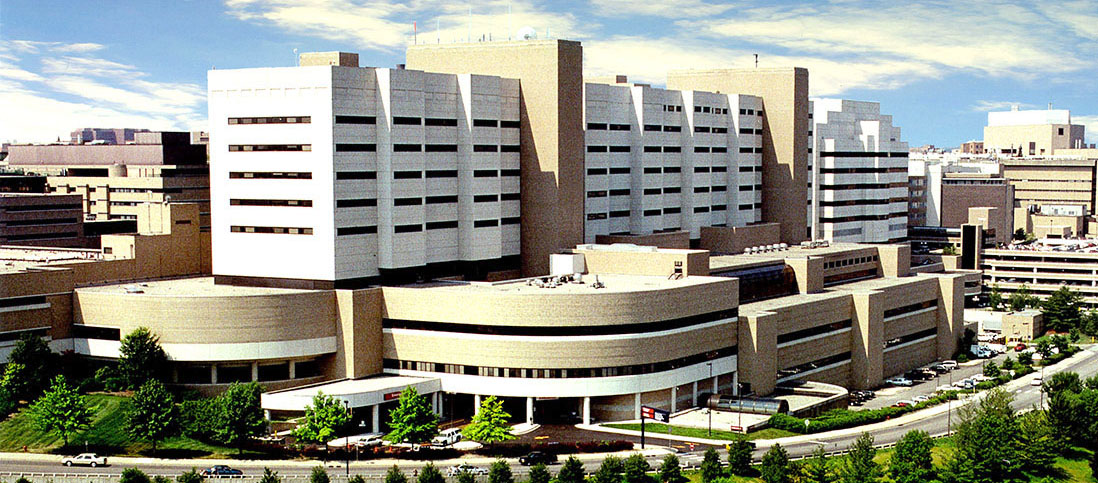
C.S. Mott Children's Hospital and von Voigtlander Women's Hospital
The new facilities at C.S. Mott Children's Hospital and von Voigtlander Women's Hospital opened in December 2011 following the completion of a $754 million, five-year construction project. It is one of the largest children's hospitals in the United States. The hospital is 1,100,000 0 2sq 0 2ft (100,000 0 2m2) and consists of a 12-storey inpatient building and a 9-storey outpatient building. There are 348 beds, including 50 maternity wards and 46 neonatal intensive care units. This expansion has increased the hospital's bed capacity by 75%, making it the largest of the three children's hospitals in Michigan. Every inpatient room is private, unlike the old facility, which was mostly double rooms. The new hospital has 16 operating rooms and two interventional radiology suites. The first women's hospital opened in 1950, while the original C.S. Mott Children's Hospital opened in 1950. 1969, its origins can be traced back to a children's ward that began in 1903.
